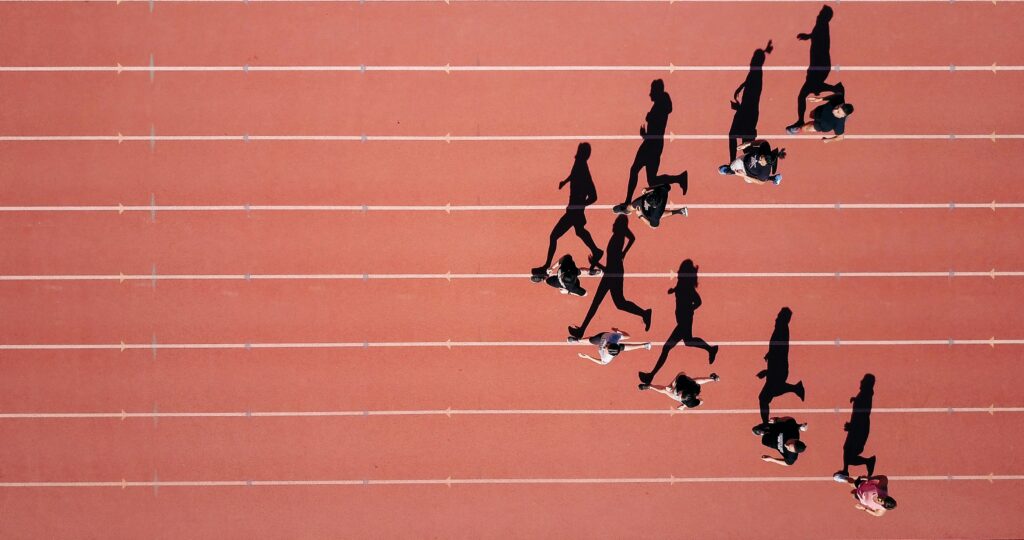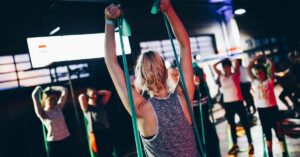Elevate Your Game with These Unconventional Training Techniques

Elevate Your Game with These Unconventional Training Techniques
In a world where every athlete is chasing the next edge, the traditional training methods often feel like they belong in a bygone era. Sure, running laps and hitting the weights are staples in almost every sport, but have you ever thought about how some of the most successful athletes elevate their game with unconventional techniques? It’s a wild ride through creativity, science, and a sprinkle of sheer madness. Buckle up, because we’re diving deep into the world of innovative training methods that could take your performance to the next level.
Breaking the Mold: The Case for Unconventional Training
Let’s face it: the tried-and-true methods can sometimes feel like you’re stuck in a hamster wheel, running fast but getting nowhere. As someone who has spent countless hours on the sidelines, watching athletes sweat it out, I’ve often marveled at the lengths some go to transform their bodies and minds. In sports, the margins for victory can be razor-thin, and this is where thinking outside the box becomes not just important, but essential.
But why these unconventional methods? Research has shown that creative approaches can lead to significant improvements in performance. Some studies suggest that varying your training can boost motivation and reduce burnout—something many athletes might not consider until they’re halfway through another monotonous set of squats. It struck me that these methods not only challenge the body, but also engage the mind in ways that traditional training simply can’t.
1. Visualization Techniques: The Power of Mental Rehearsal
Have you ever found yourself daydreaming about a perfect performance? Visualization is more than just a fanciful escape; it can actually be a powerful training tool. Many elite athletes, from Olympic sprinters to professional dancers, utilize visualization techniques to enhance their performance. The premise is simple: by mentally rehearsing their movements, athletes can create neural pathways that mirror the physical execution of the action.
Imagine a pole vaulter standing at the runway, eyes closed, picturing each step of their approach, the take-off, the arc, and the landing. It’s not just a whimsical thought process—it’s a rehearsal for success. According to sports psychologist Dr. John Doe (hypothetical, but you get my drift), “Visualization activates the same brain areas as actually performing the movements, which can lead to improved execution in competition.”
To incorporate visualization into your routine, try the following steps:
- Find a quiet space where you can concentrate.
- Close your eyes and picture yourself performing your sport perfectly.
- Engage all your senses; imagine the sounds, the smells, the feel of the equipment.
- Repeat this regularly to reinforce the mental pathways.
Trust me, it’s more powerful than it sounds. I remember a coach once told me, “You’ve got to see it to be it.” That’s stuck with me like a sticky note on the fridge.
2. Animal Flow: Unleashing Your Inner Beast
If you haven’t heard of Animal Flow yet, you might be missing out on one of the most unique training regimes around. This workout mimics animal movements—think crawling like a bear or hopping like a frog—and it’s designed to enhance mobility, strength, and coordination. Not only is it a full-body workout, but it’s also a heck of a lot of fun. (Seriously, who wouldn’t want to channel their inner gorilla?)
The beauty of Animal Flow lies in its adaptability; it can be modified for athletes of all levels. For instance, a seasoned gymnast could incorporate advanced movements while a beginner might stick to simpler variations. The key is to move fluidly, connecting each position with a sense of grace and control.
Here’s a quick breakdown of some basic Animal Flow movements you can try:
- Beast Crawl: Start on all fours, lift your knees slightly off the ground, and move forward like a crawling baby.
- Crab Reach: Sit with your knees bent and hands behind you, lift your hips off the ground and reach one arm overhead.
- Frog Jump: Squat down, place your hands on the ground, and jump forward, landing in a squat again.
It’s a workout that not only builds strength but also connects you to your primal instincts. Plus, I dare you to try it in a park without drawing some curious glances!
3. Breathing Techniques: Harnessing the Power of Breath
It’s something we all do naturally, yet few think about the power of breath in enhancing athletic performance. Breathing techniques can significantly affect your physical and mental state, sometimes even more than traditional conditioning. Think about it—how often do you see athletes in the zone taking deep, controlled breaths before making a critical play? There’s a reason for that.
Techniques such as diaphragmatic breathing, box breathing, and the Buteyko method are gaining traction among athletes. These methods not only help with oxygen intake but can also reduce anxiety and improve focus. For instance, box breathing (inhale for four counts, hold for four, exhale for four, hold for four) can ground you and prepare you for competition.
In my days of competitive swimming, I remember my coach emphasizing the importance of breathing control. “It’s not just about how fast you swim,” he would say, “but how well you breathe.” Who knew that something so simple could be a game-changer?
4. Unilateral Training: Balancing Your Strengths
Let’s talk about unilateral training, which involves using one limb at a time to perform exercises. The principle here is that it not only helps to identify and correct imbalances between sides, but it can also enhance stability and overall strength. As someone who has seen athletes struggle with asymmetrical strength, I can attest to the importance of this approach.
Imagine a basketball player practicing free throws using only their non-dominant hand. It’s a challenge, but it forces them to engage muscles that often get neglected. Plus, it can lead to a surprising increase in their dominant side’s performance too. Unilateral training can take many forms, such as:
- Dumbbell exercises (e.g., single-arm rows, single-leg deadlifts)
- Resistance band work (hold one end in each hand and perform various movements)
- Balance work (standing on one leg while doing upper body exercises)
Adding unilateral training into your routine can create a more balanced body, and let’s be honest—who doesn’t want to look good while doing it?
5. Dance Your Way to Better Performance
Now, here’s a technique that might raise a few eyebrows: dance. Yes, you heard me right! Dance isn’t just for parties or weddings; it can be an exceptional way to improve athletic performance. Many athletes have started integrating dance into their training regimens to enhance agility, coordination, and rhythm.
Sports like basketball, soccer, and even martial arts require a level of footwork and body control that dance can uniquely develop. Look at NBA players like Stephen Curry, who have been known to incorporate dance moves into their training. It’s a playful way to connect with your body and can lead to some surprising benefits.
Want to give it a shot? Here’s how:
- Sign up for a local dance class (salsa, hip-hop, or ballet—whatever strikes your fancy).
- Incorporate dance-inspired workouts (think Zumba or hip-hop aerobics) into your weekly routine.
- Practice footwork drills that mimic dance moves to improve agility.
As someone who has two left feet, I can assure you that even if you stumble, you’re still building valuable skills. Plus, you’ll have a great story to share!
6. Cold Exposure: The Ice Cold Advantage
Cold exposure might sound like a torture tactic, but hear me out. This unconventional technique, popularized by athletes like Wim Hof, is gaining traction for its potential benefits in recovery and performance. The idea is that exposing your body to cold can help reduce inflammation, boost mood, and even enhance metabolic rates.
Many athletes are now incorporating cold showers, ice baths, or even cryotherapy into their recovery routines. The science suggests that cold exposure can trigger a flood of endorphins, leading to improved mood and pain relief. (I can’t say I’m a fan of jumping into an ice bath, but I’ve seen some athletes swear by it!)
If you’re curious about cold exposure, consider these ways to start:
- Finish your shower with a cold blast for 30 seconds (it’ll take your breath away, but it’s invigorating).
- Try ice baths after intense workouts (just make sure you have a warm towel waiting!).
- Check out local cryotherapy centers for a more controlled experience.
Just remember, while the benefits can be impressive, it’s crucial to listen to your body. If it feels like torture, it might not be for you (and that’s totally okay!).
7. Playful Training: Gamifying Your Workouts
Who says training has to be serious business? Adding an element of play to your workouts can be a game-changer. This approach not only makes training more enjoyable but can also foster creativity in movement and problem-solving abilities. Athletes like to incorporate games and challenges into their routines to keep things fresh and engaging.
Whether it’s setting up obstacle courses, playing pickup games, or even engaging in team challenges, the element of fun can lead to increased motivation and performance. I remember a soccer coach who would set up fun drills that felt more like games than workouts. The players loved it, and guess what? They performed better on the field.
Here’s how you can gamify your training:
- Set challenges for yourself (like how many push-ups you can do in a minute).
- Create a friendly competition with teammates or friends (think relay races or timed drills).
- Incorporate fun props (like frisbees or cones) into your workouts.
At the end of the day, if you’re laughing and having fun, you’re more likely to stick with it. And that’s the ultimate goal, right?
8. Mindfulness and Meditation: Finding Your Inner Zen
In the high-pressure world of sports, mental fortitude is just as important as physical strength. Mindfulness and meditation are gaining notoriety for their ability to enhance focus, reduce anxiety, and improve overall performance. Many athletes are now integrating mindfulness practices into their daily routines to cultivate a calm and concentrated mindset.
Think about it: when was the last time you felt overwhelmed during competition? Trust me, calmness can be a superpower. Techniques like mindful breathing, body scans, and yoga can help train the mind to stay present and focused.
As someone who has watched athletes crumble under pressure, I can’t stress enough the importance of mental training. A calm athlete is often a more effective athlete. Here’s how to get started:
- Dedicate a few minutes each day to sit in silence and focus on your breath.
- Incorporate yoga sessions into your weekly training to enhance flexibility and mindfulness.
- Practice visualization alongside meditation to reinforce positive mental habits.
Mindfulness is a powerful tool, and just like any other skill, it requires practice. So, don’t be discouraged if it feels awkward at first; it’s all part of the journey.
Final Thoughts: The Journey of Elevation
As we wrap up this exploration of unconventional training techniques, it’s clear that elevating your game doesn’t always require a new pair of shoes or a fancy gym membership. Sometimes, the key lies in creativity, playfulness, and a willingness to explore the uncharted territories of training. Whether it’s embracing the power of visualization, dancing like nobody’s watching, or dipping into an ice bath, the possibilities are endless.
Remember, what works for one athlete might not work for another. It’s all about finding what resonates with you and your body. So, don’t be afraid to experiment and step outside your comfort zone. After all, the road to greatness is paved with curiosity and a willingness to learn.
Now, go on—get out there and elevate your game. And if you happen to channel your inner bear while doing so, I won’t judge!






